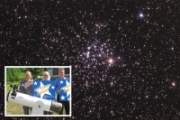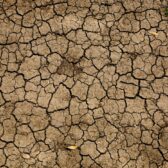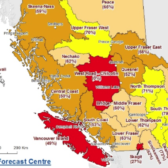Starry Nights program gears up for 2013
It seems that 2012 was the wettest year on record for this area, which didn’t help the Starry Nights program at Taghum Hall.
Thanks to the clouds and rain a partial solar eclipse, a partial lunar eclipse, and the transit of the sun by Venus were all missed.
The upcoming year does not have the spectacular events of 2012 but if the clouds stay away the program could look forward to a triple planet conjunction in May and another in July and we may get a bright comet at the end of the year.
A couple of Starry Night members have recently purchased their first telescope or upgraded to a larger aperture telescope.
It would be nice to see a number of telescopes at Taghum Hall when we program resumes in March.
In the New Year organizer would like to try more structured Starry Night program with the focus of each night being a particular subject, e.g. galaxies or planetary nebulae.
Organizers would still take a look at other objects in the night sky like planets and star clusters etc. but will concentrate on one type of subject, showing as many samples and variants of that subject as possible and I will try to explain as much as I know about the subject.
Organizers been asked by Roger Oliver about the idea of linking our Starry Night program with the Learning in Retirement program at Selkirk College, the idea being a Friday daytime astronomy class at the college followed up with a night viewing and telescope study of the day’s subject.
There may be a clearer idea how this will work in the spring.
People have also requested more “Sunny Sunday” viewings of the Sun with the two solar telescopes.
That will be tried for May, June, July and September.
Astronomical Events for January
Thursday, January 3 – Quadrantid meteor shower. It will be at its best between 1 a.m. to dawn. There could be as many as 100 meteors per hour although we will be hampered by moon light. This meteor shower has a sharp drop off rate with very few meteors before or after the peak.
Thursday, January 10 – Very thin crescent Moon , 2 degrees above Venus, low in the east, just before dawn.
Monday, January 21 – Gibbous Moon very close, (3/4 of a degree) below Jupiter tonight.
Jupiter will be high in the sky at night and Saturn will be nicely situated in the sky a few hours before dawn during the month of January.


























